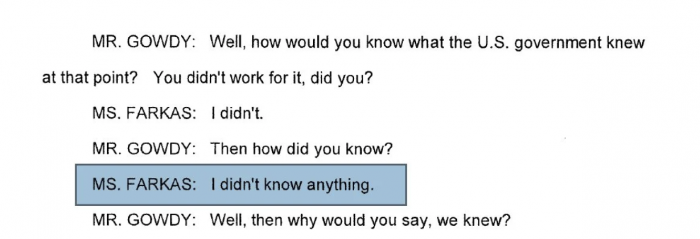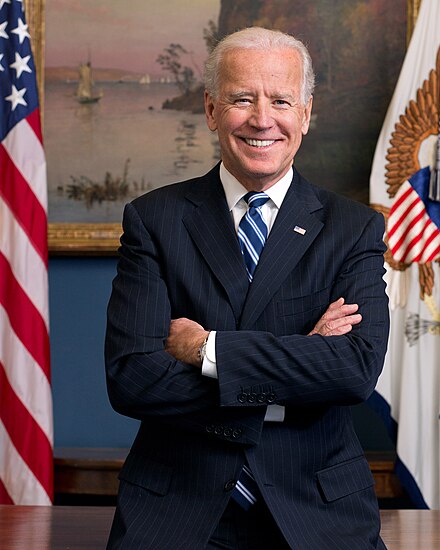His name is not Donald J Trump.
That is all it takes, apparently, for a Democratic challenger to command the loyalty of the party faithful. It doesn’t matter what he thinks, assuming he is capable of it. After all his supporters refuse to think. They just know his name isn’t Donald Trump.
But there is a problem that goes way beyond the usual foolishness that accompanies political campaigns. The problem concerns the mental acuity of the almost certain Democratic Party nominee for president, former vice president Joe Biden. It is obvious to all who are willing to see that the mental faculties of the former vice president, never strong to begin with, are in a state of rapid decline. The man can barely get through a sentence without losing his train of thought. He routinely begins to rank order proposed solutions to problems but almost never manages to get past the first on the list before wandering off.
But his name is not Donald Trump.
Joe Biden’s campaign, which now largely consists of boiler plate coming from a makeshift TV studio in his basement, is a pretty joyless affair. Were it not for his campaign’s center of operations at 620 8th Avenue in Manhattan, the campaign would be invisible. However, behind the scenes the campaign is working feverishly to unite the Party. The effort is instructive.
During the primaries the voters went out of their way to signal that they were decidedly not interested in having a left-wing radical on the model of Jeremy Corbyn at the top of the ticket. And so beginning with South Carolina and then on Super Tuesday, Joe Biden trounced Bernie Sanders (I. Rolling Stone) at every step of the way. There were strategic elements to the vote as well. Joe Biden looked safe compared to wild man Bernie Sanders and he looked normal compared to the schoolmarmish Elizabeth Warren (D MA) who, it must be said, annoyed pretty much everyone she came into contact with.
You would think that set of circumstances would lead the almost certain nominee to try to unite the party around a center-left ticket. But you would be wrong. Because few really voted for Joe Biden with any kind of enthusiasm. They just voted against all the rest; Biden was just the one left standing. And all the rest, possibly excepting Amy Klobuchar (D, MN), were (and are) radical lefties. They control a large chuck of convention delegates, and more importantly, they control the policy conversation. So Biden is moving to the left, not the center, to unite the Party around his candidacy.
There are two parts to the Biden strategy. The first is picking a female running mate. That’s what he promised to do, and this appears to be one of those rare promises he means to keep. The issue he facers is that there is a behind the scenes pitched battle to influence his choice. According to the gossip around DC, Bernie Sanders vetoed Biden’s choice of (heaven help us) Elizabeth Warren. Apparently Sanders and Warren are no longer besties.
Amy Klobuchar has distinguished herself by occasionally taking reality into consideration. For the Bernie Bros, that is disqualifying, so it is unlikely that Biden would tap her, no matter how sensible a choice it would be given all the rest. That leaves Stacey Abrams, professional grievance monger, whose chief qualification for high office is that she ran for governor of Georgia and lost. She lost and has to this day has refused to concede, maintaining without a shred of evidence, that the election was stolen. Of the 3.9 million votes cast, she lost by just under 55,000, a margin of 1.39%, insufficient to trigger a recount.
The important thing about Stacey Abrams is not that she, like Hillary Clinton, is a sore loser. The important thing is that her name is not Donald Trump, which is all that matters.
Let’s leave personnel matters aside for the moment and turn to the second problem the fledgling Biden campaign has to face as it attempts to unify the Party. Biden has a policy problem.
The machinery of the Democratic Party is dominated by its left wing, which is also where its enthusiasm lies. It is this ideological bloc that is determined to set the policy agenda. And so it is gearing up to instruct Biden on what he is supposed to believe. Since Biden’s core belief is that he should be President he will say and do pretty much whatever he thinks will unify the Party so he can win in November.
The balancing act will be determined by calculating how far left he has to move to placate his socialist allies (and let’s not pretend that they are not socialists) without losing moderates who vote Democratic, particularly in the upper Midwest. These are the voters who are the salt of the earth when they vote for Democrats and deplorables when they don’t.
So how far left is Biden prepared to go to fulfill his life long ambition? One clue is that his campaign has created in partnership with Bernie Sanders, a series of panels with a mandate to hammer out policy positions for the fall campaign. The six panels formed so far will explore “possible policy initiatives” with respect to climate change, criminal justice, the economy, education, health care and immigration.
Biden named 5 members of each committee; Sanders named 3. Each committee has 2 co-chairs, one named by Biden and one by Sanders. Inevitably, the Sanders picks are radicals with allegiances to outside groups. (Sanders remember is not even a Democrat). For instance, the co-chair of the climate change panel is non-other than Rep. Alexandria Ocasio-Cortez (AOC) who has pledged her allegiance to the “Climate Justice Community” to whom she pledges to be “fully accountable”.
Other task force members are outspoken in their views favoring an end to fracking, adopting Medicare-for-All, “free college”, welfare benefits for illegal aliens and defunding the Border Patrol. Not surprisingly an economist on the panel, Stephanie Kelton (PhD, the New School, 2001) is an advocate of Modern Monetary Theory (MMT). She claims that governments no longer have to worry about where they will get the money to pay for things, they can just print the currency. No problem. (See Kelton interviewed at the CFA Institute at this link). She gets to the heart of MMT at about 1 minute into the video.
It is, or should be, perfectly obvious that all the movement in the Biden campaign is to the left, and in all probability will continue to be. What is so bizarre about all this is that up until this point campaigns would iron out their policy positions and announce them before hand. Biden is waiting to be told what his policy positions are after having effectively won the nomination.
But that is how things park in the People’s Republic.
Then again, his name is not Donald Trump.
Just like 300 million other Americans.
JFB
Please follow and like us:




